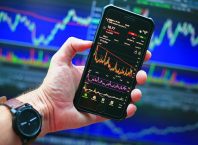Getting into Forex has never been easier since you can get lots of information online, and you can quickly check whether a company you want to trade with is fraudulent or not. In the digital age seems like (almost) anything has a shortcut, and so does trading.
What we mean by “shortcut”, you don’t have to go outside and go to a specific facility to trade. This means researching and finding the right source of information, and that has been made a lot easier. Still, you need to improve and learn using help from your broker and learning by yourself. You’ll see that Forex is a place that offers many opportunities if you are willing to put some effort into it.
With that being said, you probably know some of the basic forex terms, but here we want to explain some about currencies in particular.
Contents
Currency pairs
In foreign exchange (Forex), every currency has a pair. The first currency is the base currency, and the other one is the counter currency. Currency pairs exist for a very profitable reason, and the transaction currency (first one), and the quote currency (the second one), are there to serve as countering one another, in a sense.
The base currency is first to be indicated in currency pairs, and it shows how much of the second currency in the pair (aka quote currency) you need so you can get a base currency unit. Take, for example, EUR/USD. Euro represents base currency, and the American dollar is the quote currency. As you can see, currency pairs are written using currency abbreviation, slash, plus the other currency abbreviation. That’s why when you look at different charts, you will see JPY (Japanese Yen), GBP (the Great British Pound), CHF for the Swiss franc, and so on. That’s why it would be useful to check which ones you don’t know, so you can research them and maybe figure out you’d like to try trading with them as well.
Counter Currency
Counter currency or the quote currency is the second one in the pair (so, if we have EUR/USD, USD would be the quote currency), and it determines the value of the EUR, aka base currency. What may be tricky about the quote currency is that it can act as direct and indirect, where in the first case it represents the foreign currency, but in the latter, it will be the domestic currency.
Important to know: whenever the currency pair value increases, that means the value of the counter currency is falling. It doesn’ matter whether the pair was direct or indirect.
Why is it important to understand both base and quote currency?
No matter how much your broker is willing to explain things to you and what you should try to invest in, if you don’t understand basic charts or forex news when you go online, that means you don’t know enough for your good. What we are explaining here is fundamental and essential knowledge every trader should have to understand the system and their broker better. If you want to trade currencies, there are major, minor and exotic ones, and every one of them is set in specific ways, which implies you need to know as much as you can about them.
Exchange rate
When you take a look at a currency pair, you should be able to see how much you need to buy or sell so you can get one unit of the base currency. It is all decided to depend on the counter currency. Taking EUR/USD as an example once again, if the counter currency (USD) is going down in value, that means EUR is increasing. In this case, EUR represents the base (domestic currency), while USD stands for quote (foreign) currency.
What is Simultaneous Movement?
Investors are an essential part of Forex since they are usually both buying and selling currencies. Whenever they buy a currency pair, that means they bought the base currency and sold the quote currency simultaneously. This is often done when investors think the base currency has the potential to grow and vice versa.












